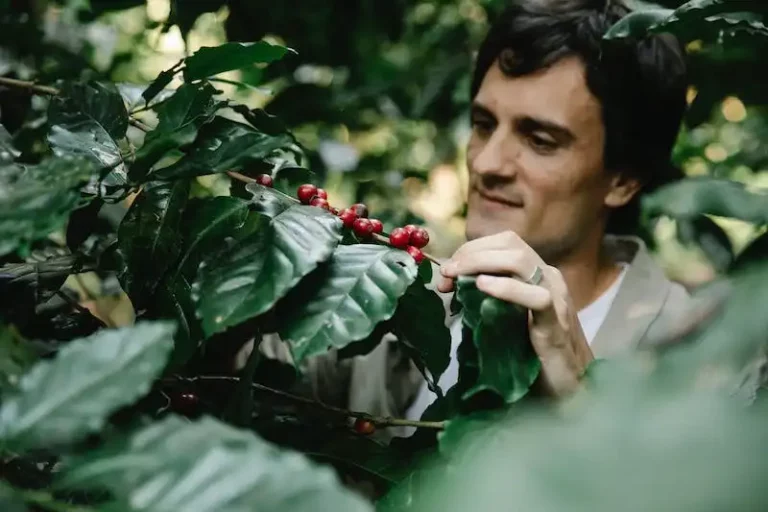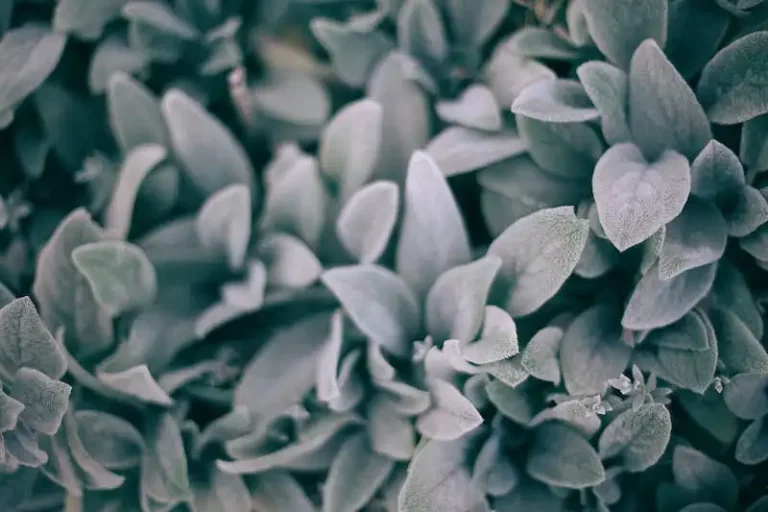Kale, with its leafy green or maroon leaves, is a nutritious and delicious addition to any vegetable garden. Whether you’re a gardening enthusiast or a beginner, this guide will provide you with the necessary information to successfully grow kale from seed to harvest.
Before you begin, it’s important to choose the right time and conditions for planting kale. Kale is a cold-hardy crop, so it is best to start planting it several weeks before the last frost date in your area. You can either start seeds indoors in containers or directly sow them into the garden. If you choose to start seeds indoors, it is recommended to do so about 6-8 weeks before the last frost date. This will give the plants enough time to grow before transplanting them outside.
Kale can be planted in a wide variety of soil types, but it prefers well-drained, fertile soil with a pH of 6.0-7.5. It is also important to provide the plants with regular moisture to prevent damping-off disease and promote healthy growth. Mulches can be used to conserve moisture and control weeds. Safe and recommended mulches include straw, chopped leaves, and grass clippings. These will also help prevent soil moisture loss.
Kale plants should be spaced about 12-18 inches apart in rows that are at least 18-24 inches apart. This will allow each plant to have enough room to grow and access to sufficient nutrition. Fertilization can be done before planting or during the growing season. A soil test or the recommendations provided by your local extension office can help determine the specific fertilizer needs of your soil. Generally, a balanced fertilizer with a ratio of 10-10-10, or one high in nitrogen, can be used.
Kale is relatively resistant to pests and diseases, but there are a few common issues to be aware of. Aphids, cabbage worms, and flea beetles can damage the plants, while diseases like alternaria leaf spot and downy mildew can cause leaf damage. To prevent these issues, it is recommended to rotate crops, plant disease-resistant varieties, and practice good garden hygiene by removing plant debris regularly. Organic pest control methods, such as using Bacillus thuringiensis (Bt), can also be effective in managing pest problems.
The time it takes for kale to reach harvest stage will depend on the variety and growing conditions, but it is generally ready to be picked within 55-75 days after planting. Typically, you can begin harvesting kale when the leaves are a desirable size, usually about 6-8 weeks after sowing. To harvest kale, simply cut the outer leaves at the base of the stem, leaving the center leaves to continue growing. Regularly harvesting the outer leaves will encourage the plants to produce new growth for you to continuously enjoy.
In conclusion, growing kale from seed to harvest can be a rewarding experience. By following the right planting techniques, providing the appropriate growing conditions, and preventing diseases and pests, you can have a bountiful supply of nutritious kale throughout the growing season. So why not start growing your own kale and enjoy its health benefits straight from your garden to your plate?
10 Tips For Growing Kale in Pots or Containers
Growing kale in pots or containers can be an easy and convenient way to enjoy this leafy green vegetable. Whether you have a small garden or limited space, these 10 tips will help you successfully grow kale in pots or containers.
- Choose the right variety: When purchasing kale seeds or seedlings, choose varieties that are suitable for container gardening. Some popular container-friendly kale varieties include lacinato, red Russian, dwarf blue curled, and redbor.
- Find the right container: Look for pots or containers that are at least 12 inches deep and have drainage holes at the bottom. This will ensure proper drainage and prevent waterlogged roots.
- Prepare the potting mix: Use a well-draining potting mix made specifically for container gardening. Avoid garden soil, as it may be too heavy and compacted for containers.
- Provide adequate sunlight: Kale thrives in full sun, so choose a sunny spot to place your pots or containers. If you have limited sunlight in your garden, kale can tolerate partial shade as well.
- Water regularly: Keep the soil consistently moist but not waterlogged. Water the plants regularly, especially during dry spells, and watch out for signs of wilting.
- Monitor pests: Watch out for pests like aphids, beetles, and cabbage loopers. Inspect the plants regularly and remove any larvae or eggs you find. Natural insecticides like neem oil can also be used for preventative measures.
- Control diseases: Kale is susceptible to diseases like damping off and downy mildew. To prevent these diseases, avoid overcrowding the plants and provide good air circulation by spacing them at least 12-18 inches apart.
- Fertilize appropriately: Kale is a leafy green that requires regular fertilization. Use a balanced, slow-release fertilizer according to the package instructions to promote healthy growth and productivity.
- Mulch to conserve moisture: Apply a layer of organic mulch, such as straw or shredded leaves, around the base of the plants. This will help conserve moisture in the soil and suppress weed growth.
- Harvest at the right time: Kale can be harvested at any stage, but for the best flavor and tenderness, harvest the leaves before they reach their full size. Cut the outer leaves from the bottom of the stem, allowing the inner leaves to continue growing.
By diligently following these 10 tips, you can enjoy a bountiful harvest of kale from your pots or containers. Whether you add it to salads, soups, or simply sauté it with some garlic, kale is a nutritious and versatile vegetable that can be easily grown in containers.
First Pick the Right Container
When it comes to growing kale, the first step is to pick the right container. Since kale grows well in pots, you can choose a small or a large container, depending on your space constraints. Ensure that the container has drainage holes to prevent waterlogging.
A small container is ideal if you are short on space or want to start with just a few plants. A large container, on the other hand, can accommodate several kale plants, allowing you to grow a substantial harvest.
Consider the variety of kale you want to grow. If you live in an area with frequent frosts, a dwarf variety is a good choice as it can withstand cold conditions. If you have a sunny spot in your garden or patio, hearty varieties like Russian Red or MSU Dwarf can thrive.
Before you begin planting your kale, ensure that you have prepared the container. Clean and sterilize the pot to prevent any diseases or pests from attacking your plants. You can use a solution of bleach and water to wipe down the container. Rinse thoroughly and let it air dry.
Next, fill the container with good quality potting soil mixed with compost. Kale prefers well-drained soil that is rich in organic matter. It is important to space out the plants properly to allow for air circulation and prevent overcrowding.
When planting the kale seeds, make sure to follow the spacing instructions provided on the seed packet. Typically, you would need to plant the seeds about 1/4 inch deep and 12 to 18 inches apart.
After planting the seeds, cover them lightly with soil and water the container. Kale requires regular watering to keep the soil moist but not waterlogged. It is advisable to water the plants in the morning or late afternoon to prevent leafy diseases, such as downy mildew.
As the kale plants grow, you may need to thin them out to allow only the strongest plants to thrive. Thinning helps prevent overcrowding, improving airflow and reducing the risk of diseases.
When the kale plants reach about three inches in height, you can begin harvesting the leaves. Pick the mature leaves from the bottom of the plant, leaving the smaller leaves at the top to continue growing. This allows the plant to continue producing new leaves, giving you a steady supply of fresh kale.
Kale’s leaves have a downy texture, so it is recommended to wash them thoroughly before eating. Check for insects or debris on the leaves and remove them. Once washed, you can use the kale leaves in a variety of recipes, such as salads, smoothies, or sautés.
Remember to regularly monitor your kale plants for pests, such as aphids or cabbage worms. If you notice any infestation, there are organic insecticidal soaps available that can help control the problem.
Whether you buy kale seeds or start from seedlings, following these preparation and planting tips will ensure a successful kale harvest. From picking the right container to harvesting your greens, this guide will help you grow a bountiful supply of this nutritious vegetable.
Size
Kale plants can grow to be quite large, reaching heights of up to 2-3 feet. However, their size can vary depending on the variety and growing conditions. It typically takes around 6-8 weeks for kale seeds to germinate and appear above the soil. During this time, it is important to keep the soil moist but not waterlogged. Once the seedlings have emerged, regular watering is necessary to help the plants develop properly.
When planting kale seeds, it is recommended to space them about 12-18 inches apart to allow enough room for the plants to grow. Kale craves fertile soils with good drainage, so it is important to choose a location with well-drained soil. Adding organic matter or compost to the soil before planting can help improve drainage and fertility.
Applying a layer of mulch around the base of the kale plants can help retain moisture, prevent weed growth, and regulate soil temperature. Straw, wood chips, or shredded leaves can be used as mulches. Some gardeners also use plastic mulch, especially in colder climates, to help warm up the soil and promote faster growth.
Kale is a leafy vegetable that is relatively easy to grow, but it can be susceptible to certain diseases and pests. Common pests that may damage kale plants include aphids, flea beetles, and cabbage worms. To control these pests, you can use insecticidal soap or spray the plants with a mixture of water and dish soap. Another organic option is to apply Bacillus thuringiensis, a natural bacteria that targets certain insect larvae.
As the plants grow, it is important to monitor for any signs of diseases such as downy mildew or alternaria leaf spot. These diseases can cause yellowing or browning of the leaves, and if left untreated, can lead to plant decline. To prevent diseases, avoid overhead watering and make sure to provide adequate spacing between plants for good air circulation.
Kale varieties such as Lacinato (also known as Tuscan or dinosaur kale), Siberian, and Red Russian are popular choices among gardeners. Lacinato kale has dark blue-green leaves and a more robust flavor, while Siberian kale has tender leaves that are perfect for salads. Red Russian kale, on the other hand, has purple stems and vibrant green leaves that add a pop of color to the garden.
In conclusion, growing kale requires proper care and attention to ensure optimal growth and yield. By providing the right conditions, such as fertile soil, adequate spacing, and regular watering, you can enjoy a bountiful harvest of this nutritious vegetable. Remember to choose a variety that suits your taste preferences and to promptly address any pests or diseases that may arise.



